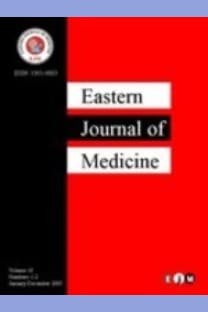The Use of Phosphate Enema in the Treatment of Short Segment Intussusception Cases
___
Ignacio RC, Fallat ME, Ostile DJ. Intussusception. In Holcomb III GW, Murphy JP, eds. Ascraft’s pediatric surgery. 5th ed. Philadelphia, Sounders 2005; 508-516.Mehra, SK, Barolia DK, Gupta AK, Chaturv V. Childhood intussusception: Timely management leads to decreased surgical risk. . International Journal of Innovative Research in Medical Science 3: 1672-to.
Avci V, Agengin K, Bilici S. Ultrasound guided reduction of ıntussusception with saline and evaluating the factors affecting the success of the procedure. Iranian Journal of Pediatr 2018; 28(1).
Columbani PM, Scholz S. Intussusception. In: Coran AG, Adzick NS, Krummel TM, et al, eds. Pediatr Surg. Vol 2. 7th ed. Philadelphia, PA: Saunders 2012; 1093-1110.
Golriz F, Cassady CI, Bales Bet, et al. Comparative safety and efficacy of balloon use in air enema reduction for pediatric intussusception. Pediatric Radiology 1-9.
Sadigh G, Zou KH, Razavi SA, Khan R, Applegate K. Meta-analysis of air versus liquid enema for intussusception reduction in children. AJR Am Journal Roentgenol 2015; 205: 542-549.
Alehossein M, Babaheidarian P, Salamati P. Comparison of different modalities for reducing childhood intussusception. Iranian Journal Radiology 2011; 8: 83-87.
Bernal CJ, Dole M, Thame K. The Role of bowel management in children with bladder and bowel dysfunction. Current Bladder Dysfunction Reports 2018; 13: 46-55.
Biebl A, Grillenberger A, Schmitt K. Enemainduced severe hyperphosphatemia in children. European Journal of Pediatrics 2009; 168: 111-112.
Marraffa JM, Hui A, Stork CM. Severe hyperphosphatemia and hypocalcemia following the rectal administration of a phosphate-containing Fleet pediatric enema. Pediatric Emergency Care 2004; 20: 453-456.
Harrington L, Schuh S. Complications of Fleet enema administration and suggested guidelines for use in the pediatric emergency department. Pediatric Emergency Care 1997; 13: 225-226.
Costigan AM, Orr S, Alshafei AE, Antao BA. How to establish a successful bowel management programme in children: a tertiary paediatric centre experience. Irish Journal of Medical Science 2018; 1- 8.
- ISSN: 1301-0883
- Yayın Aralığı: 4
- Başlangıç: 1996
- Yayıncı: ERBİL KARAMAN
Evaluation of Pediatric Patients With Severe Pulmonary Arterial Hypertension
Serdar EPÇAÇAN, MEHMET GÖKHAN RAMOĞLU, EMRAH ŞİŞLİ, Çayan ÇAKIR, Zerrin KARAKUŞ EPÇAÇAN, Mustafa Orhan BULUT
Sema YÜKSEKDAĞ, Ahmet TOPÇU, İldem DEVECİ, Ethem ÜNAL
Hook Plate Applications in Type 3 Acromioclavicular Dislocations
Socio-Demographic Determinants of Dental Anxiety and Fear Among College Students
Esin ÖZLEK, ABDULLAH YILDIRIM, Alaettin KOÇ, MURAT BOYSAN
Evolution of the Infirmary During the Medieval; Social, Economic and Religious Status
Levent BAYAM, Vasileios STOGİANNOS, Sajid KHAWAJA, Robert SMİTH, Efstathios DRAMPALOS
BURHAN BEGER, Baran Serdar KIZILYILDIZ, Metin ŞİMŞEK, Ebuzer DÜZ, HÜSEYİN AKDENİZ
Specific and Non-Spesicific Dermatoses Of Pregnancy In The Emergency Department
Mehmet Ali BİLGİLİ, Sevdegül KARADAŞ BİLVANİSİ, SERAP GÜNEŞ BİLGİLİ, AYŞE GÜLER OKYAY, RECEP DURSUN, AYŞE SERAP KARADAĞ
ÖZLEM ERGÜL ERKEÇ, SIDDIK KESKİN
MEHMET HAMDİ ŞAHAN, MİKAİL İNAL, NEŞE ASAL, NESRİN BÜYÜKTORTOP GÖKÇINAR
A rare occurrence of Guillain-Barré syndrome after off-pump coronary artery bypass surgery
